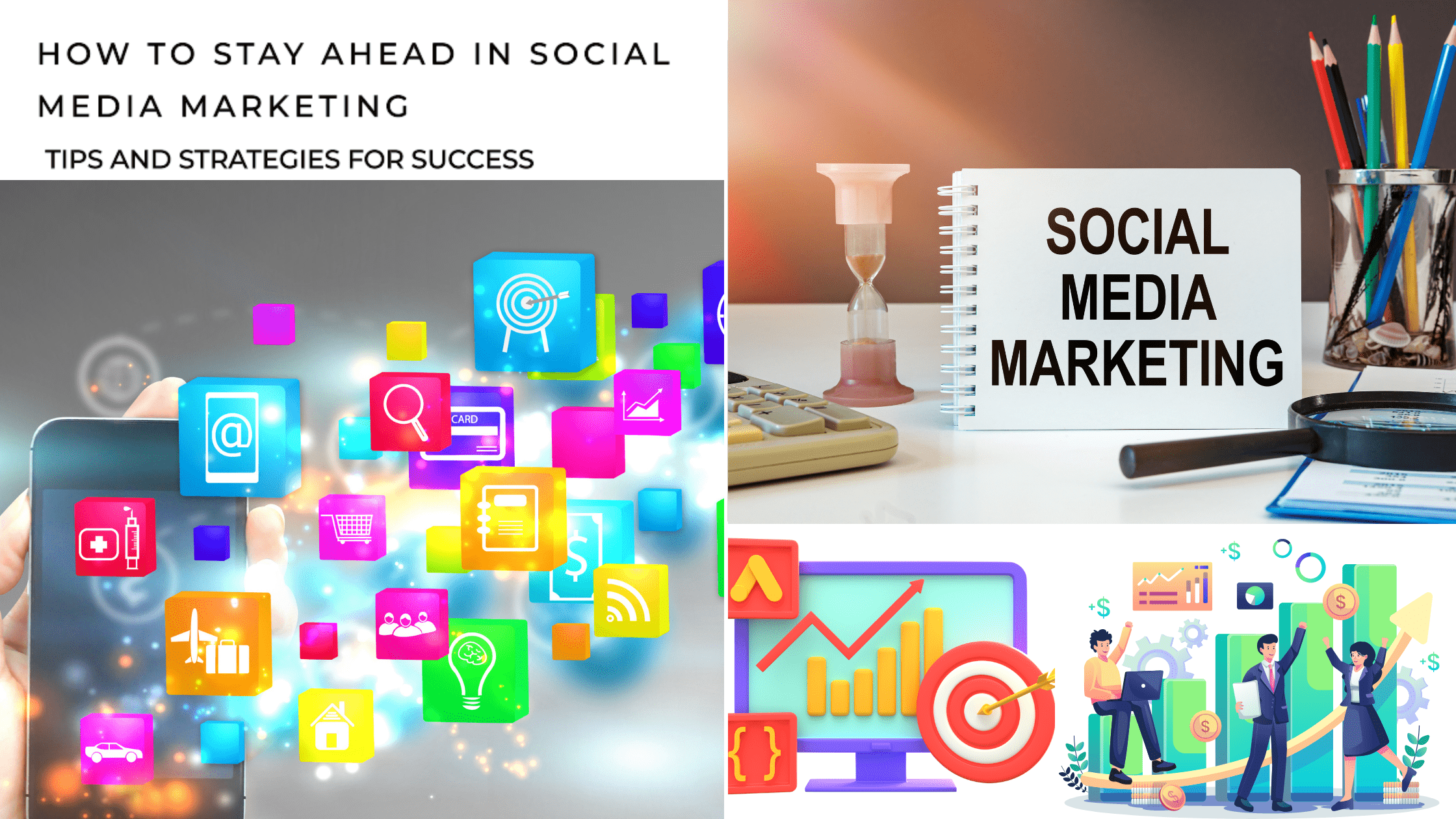In today’s rapidly evolving digital landscape, standing out in social media marketing requires staying ahead. Businesses must adapt to the latest trends to remain influential and relevant. This comprehensive article explores the dynamic world of social media marketing, delving into the current trends that shape how brands engage with their audience. By understanding and embracing these trends, businesses can unlock new opportunities and gain a competitive edge online.
- 1: Influencer Marketing - Building Authentic Partnerships is in Current Trends
- 2: Video Content - Engaging the Digital Audience
- 3: User-Generated Content (UGC) - Empowering Brand Advocacy
- 4: Ephemeral Content - Harnessing FOMO and Real-Time Engagement
- 5: Social Commerce - Seamlessly Blending Social and Shopping Experiences
- FAQs
1: Influencer Marketing – Building Authentic Partnerships is in Current Trends
Influencer marketing has emerged as a dominant force in social media. It goes beyond collaborating with famous personalities and focuses on developing genuine relationships with influential individuals with a loyal following. The appeal of influencer marketing lies in its ability to humanize brands, connecting them with their target audience through trusted voices.
By strategically partnering with influencers, businesses can tap into their dynamic network of followers, amplifying brand visibility and establishing meaningful connections. Successful influencer marketing involves identifying relevant influencers who align with the brand’s values and target demographic. Building authentic relationships with influencers ensures that partnerships are based on trust and mutual benefit, leading to impactful and effective campaigns.
2: Video Content – Engaging the Digital Audience
In the era of information overload, capturing and retaining the digital audience’s attention is a challenge. Video content shines in this situation. It has become the preferred medium for brands to engage and connect with their audience on social media. Videos can tell captivating stories, evoke emotions, and leave a lasting impression.
They provide an immersive experience that engages multiple senses, making the content more memorable and shareable. Video content is highly versatile, allowing brands to showcase products, demonstrate services, or share compelling narratives that resonate with their target audience.
The rise of platforms like YouTube, TikTok, and Instagram Reels has further fueled the demand for video content. Creating impactful videos requires businesses to understand their target audience’s preferences and pain points. Crafting compelling narratives that inspire and evoke emotions is crucial for capturing and retaining viewer attention.
By optimizing videos for different social media platforms, utilizing eye-catching visuals, captivating storytelling, and concise messaging, brands can create a powerful and persuasive video content strategy that drives engagement and conversions.
3: User-Generated Content (UGC) – Empowering Brand Advocacy
In the social media era, consumers have become creators. User-generated content (UGC) is significant in successful social media marketing campaigns. UGC is content created by passionate users who advocate for brands they love. It includes customer reviews, testimonials, and user-submitted photos or videos. Leveraging UGC provides numerous benefits for businesses.
Firstly, it adds authenticity, which traditional marketing methods often lack. Trust and credibility are established when potential customers see real people sharing their positive experiences with a brand. UGC also fosters community engagement, involving customers in the brand narrative and creating a sense of belonging. By encouraging and showcasing UGC, brands can turn their customers into brand ambassadors, generating organic buzz. Encourage followers and customers to share their experiences with businesses to stimulate UGC.
Organizing contests, challenges, or interactive campaigns can motivate users to create and share content. By acknowledging and featuring UGC on social media platforms, brands can further incentivize their audience to become active contributors, leading to a virtuous cycle of brand advocacy and community building.
4: Ephemeral Content – Harnessing FOMO and Real-Time Engagement
The fear of missing out (FOMO) has become a powerful motivator in an age of readily available information. Ephemeral content takes advantage of this fear by providing time-limited, exclusive content that creates a sense of urgency and compels users to take immediate action. Platforms like Instagram Stories and Snapchat popularized ephemeral content, featuring short-lived posts or stories that disappear after a set period.
The temporary nature of this content presents a unique opportunity for businesses to engage with their audience in real-time. It allows for authentic, spontaneous, and behind-the-scenes glimpses into the brand’s world. Ephemeral content also encourages interactivity through features like polls, quizzes, and swipe-up links, enabling businesses to gather valuable insights and drive traffic to specific destinations.
By crafting time-sensitive content, incorporating interactive elements, and leveraging analytics to measure performance, companies can create a successful temporary content strategy that piques curiosity, drives engagement, and makes sense of exclusivity.
5: Social Commerce – Seamlessly Blending Social and Shopping Experiences
Social media has transformed from a platform for connection and content consumption into a robust shopping destination. Social commerce integrates e-commerce functionalities directly into social media platforms, providing a seamless shopping experience for users. It transforms social media from a passive browsing environment into an active marketplace, enabling businesses to leverage social influence in driving sales.
Social commerce allows users to discover products, read reviews, and purchase without leaving their favorite social media app. This integration offers several advantages for businesses, such as frictionless purchasing processes that remove barriers to conversion. Social commerce platforms excel in product discovery and recommendation algorithms, allowing companies to reach a wider audience and increase conversion rates.
Additionally, integrating user reviews and ratings enhances trust and credibility, providing social proof that helps potential customers make informed purchasing decisions. Businesses can set up shoppable posts and tags on social media platforms that allow users to purchase products directly.
Leveraging user-generated reviews and ratings can further enhance trust and influence purchase decisions. Integrating social media with e-commerce platforms streamlines the shopping experience and ensures a seamless transition from discovery to checkout.
Conclusion
In the ever-evolving world of social media marketing, staying ahead of the curve is crucial for business success. By embracing current trends like influencer marketing, video content, user-generated content, ephemeral content, and social commerce, businesses can tap into new opportunities, strengthen their brand presence, and drive meaningful engagement. However, staying ahead requires continuous learning, experimentation, and adaptability. It is an ongoing process that demands an enthusiastic and forward-thinking mindset.
By understanding the unique advantages of each trend and implementing them strategically, businesses can navigate the dynamic social media landscape and position themselves as industry leaders. Seize the opportunity, embrace the trends, and propel your brand to new heights in the ever-evolving world of social media marketing.
FAQs
1. How can businesses identify relevant influencers for their influencer marketing campaigns?
Businesses should research potential influencers within their industry and identify those who have an engaged audience that matches their target demographic. Analyze metrics like followers, engagement rates, content quality, and relevance to ensure the influencer is a good fit. Use influencer marketing platforms to search for influencers based on demographic filters. Contact shortlisted influencers and be clear on campaign goals, expected content, and remuneration to establish a mutually beneficial partnership.
2. What strategies can businesses use to stimulate user-generated content (UGC) and encourage customers to become brand advocates?
To encourage UGC, businesses can run contests for users to share visual content and tag the brand. Giveaways and rewards for the best submissions can help motivate participation. Ask followers questions to spark conversations. Repost quality UGC and highlight engaged users to recognize contributions. Use relevant hashtags that followers can use when sharing branded content. Provide tools and assets like stickers and filters to make it easy to create on-brand content.
3. How can businesses effectively integrate social commerce into their social media marketing strategy?
Businesses can integrate “Shop Now” buttons on social posts to drive traffic to product pages. Tag products in posts and link to purchase pages. Create short shoppable video ads and tutorials featuring products. Collaborate with influencers on shoppable livestreams. Share user-generated reviews and visuals to establish trust. Promote limited-time offers and discounts exclusively on social platforms. Analyze performance data and refine the approach over time for optimal sales conversion.
4. How can social media help small businesses stand out in a competitive market?
Small businesses can showcase their brand personality and company culture to differentiate themselves from competitors. Posting behind-the-scenes content and interacting directly with customers enables forming connections. Targeted social ads can help reach local audiences cost-effectively. Partnering with micro-influencers in the region provides community-driven promotion. Optimizing social profiles and engagement makes the brand discoverable to nearby customers searching online.
5. What social media metrics should businesses track to measure marketing success?
Key metrics to track include follower growth, engagement rate, click-through rate, content reach, website traffic from social, social conversion, return on ad spend, and sales influenced by social media. Compare growth over time and segment data by platform, content type, and audience demographic factors. Define and monitor KPIs that align with business goals.
6. How can businesses build brand awareness and reach new audiences with social media?
Businesses can run social media ads, sponsor relevant events, and promote branded hashtags to expand their reach. Partnering with influencers as brand ambassadors introduces the brand to new networks. Joining industry forums and local business groups provides exposure to niche audiences. Creating shareable content and visual assets makes it easy for audiences to spread brand awareness. SEO optimization on social profiles helps improve visibility.
7. What social media tools and technologies should businesses consider leveraging?
Helpful tools include social media management platforms (Sprout Social, Hootsuite, Buffer), analytics software (Google Analytics, Sprout Social, Iconosquare), user-generated content aggregators (Curalate, Photoslurp), paid tools (Facebook Ads Manager, AdEspresso), chatbots for messaging (ManyChat), and scheduling and collaboration tools (MeetEdgar, CoSchedule). Integrations with e-commerce platforms like Shopify also provide valuable data.
8. How can businesses build effective social media marketing campaigns?
Set specific campaign goals and KPIs aligned with business objectives. Research the target audience and current trends to create relevant messaging. Develop engaging social content and visual assets to support the campaign. Leverage paid promotion through ads and influencers for extra reach. Promote campaign hashtags, labels, and URLs to track engagement. Analyze performance and optimize based on data insights. Align campaign timing with seasonal trends or events for maximum impact.
9. What social media best practices should businesses follow to avoid common mistakes?
Post consistently, respond promptly to comments and queries and engage community members rather than just broadcasting. Humanize the brand by sharing behind-the-scenes and employee-focused content. Avoid overly promotional language and hard-selling. Ensure legal compliance when running contests or sweepstakes. Check posts for errors before publishing. Use high-quality images and video optimized for each platform. Monitor reviews and social listening to address reputation issues quickly.
10. How can businesses improve social media video strategy to boost engagement?
Optimize videos for mobile using square formats tailored for platforms like Instagram and Facebook. Leverage Stories and Reels, which tend to drive high engagement. Collaborate with influencers to repurpose video content. Prioritize captioning and subtitles. Publish short-form episodic video series to encourage continued viewership. Share behind-the-scenes and live videos for authenticity. Analyze metrics like completion rates to optimize length and messaging. Promote video content via ads, email marketing, and other channels.

